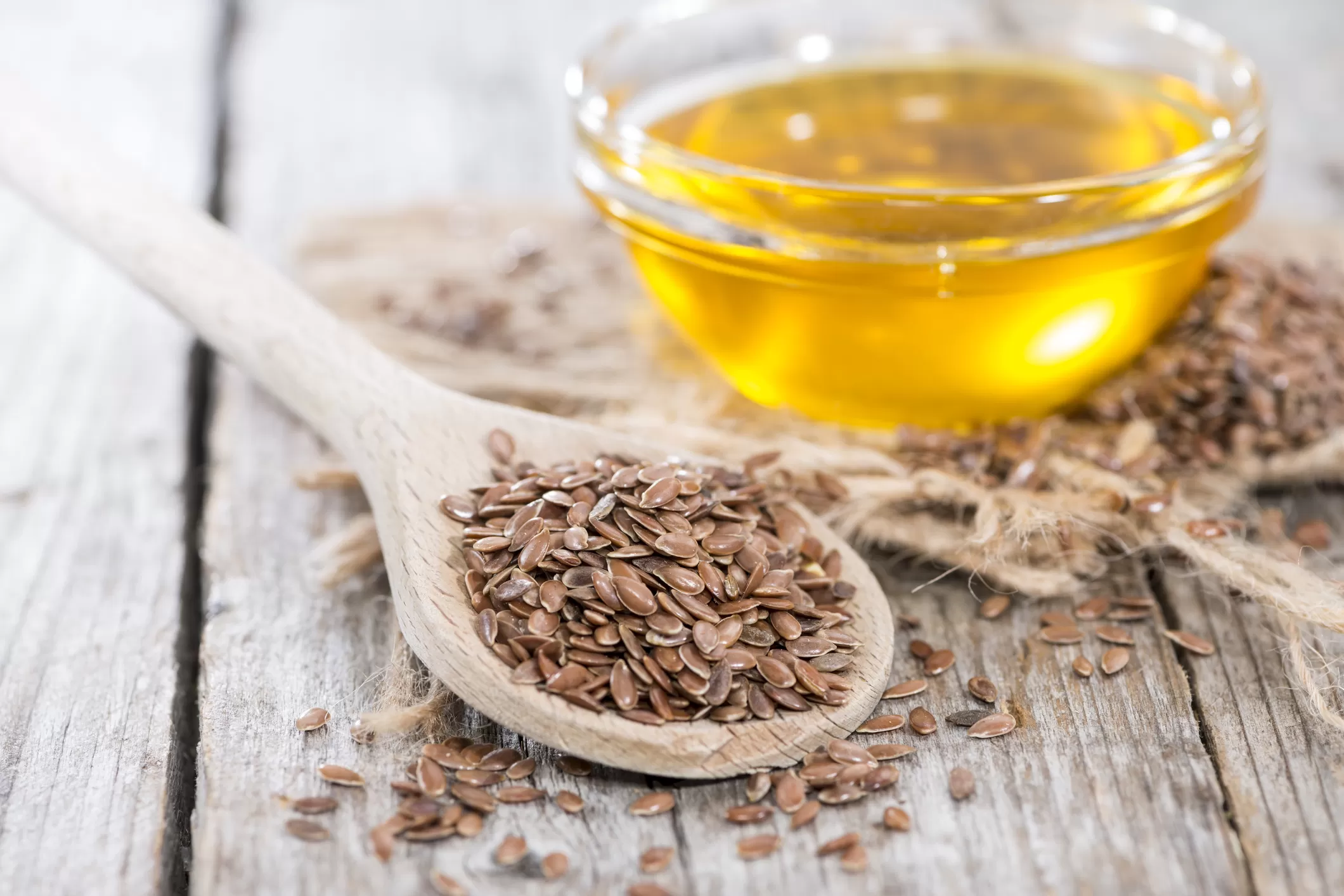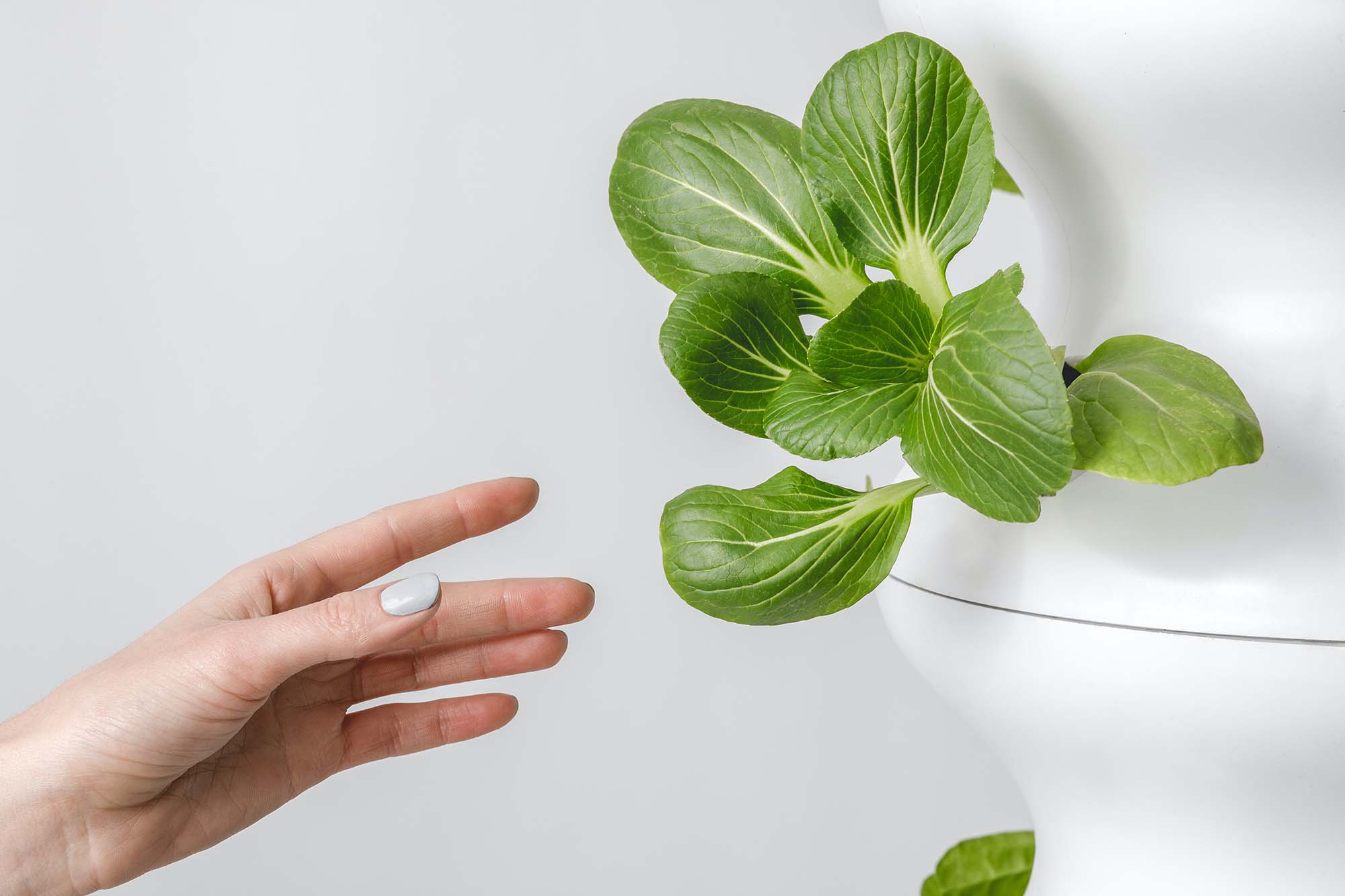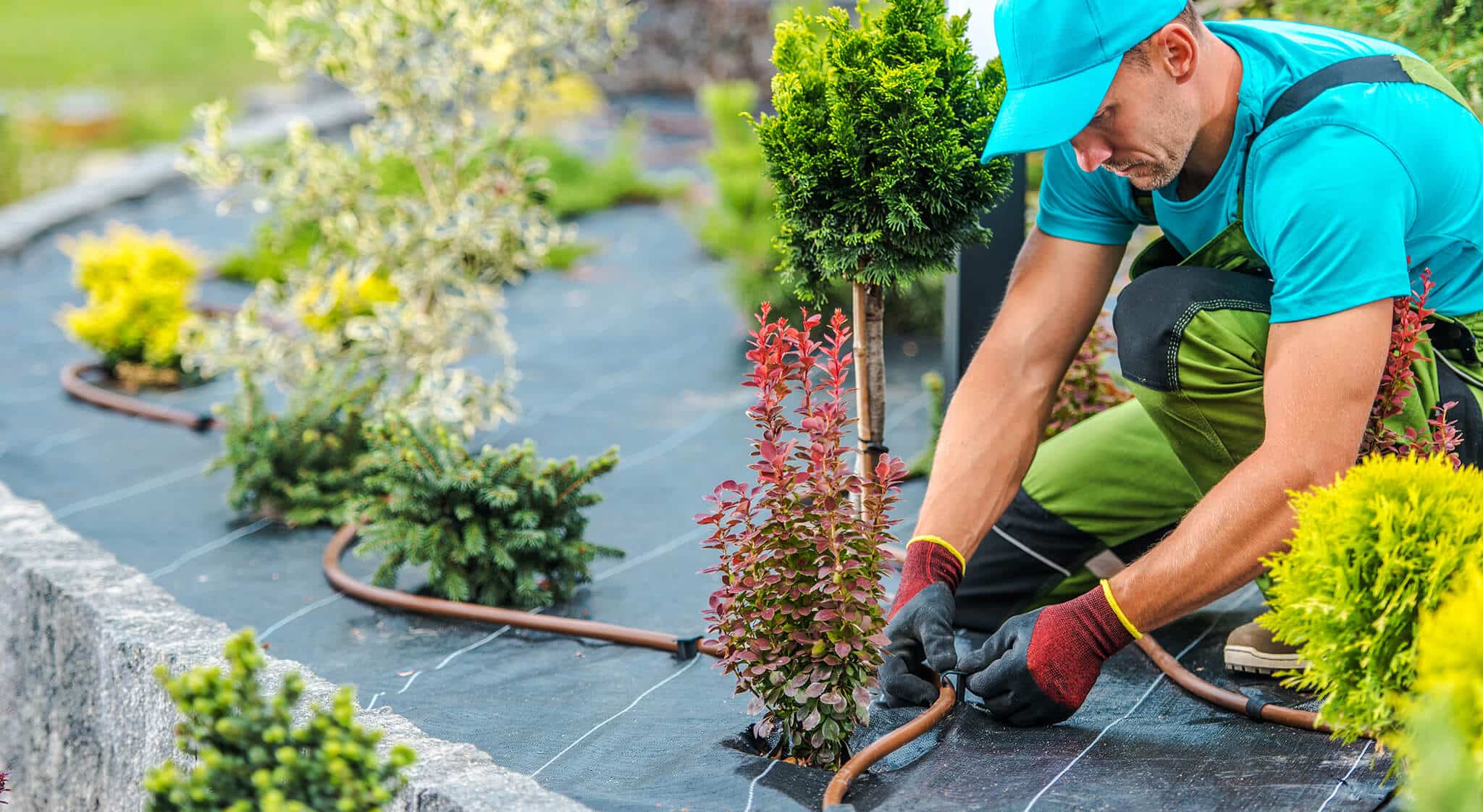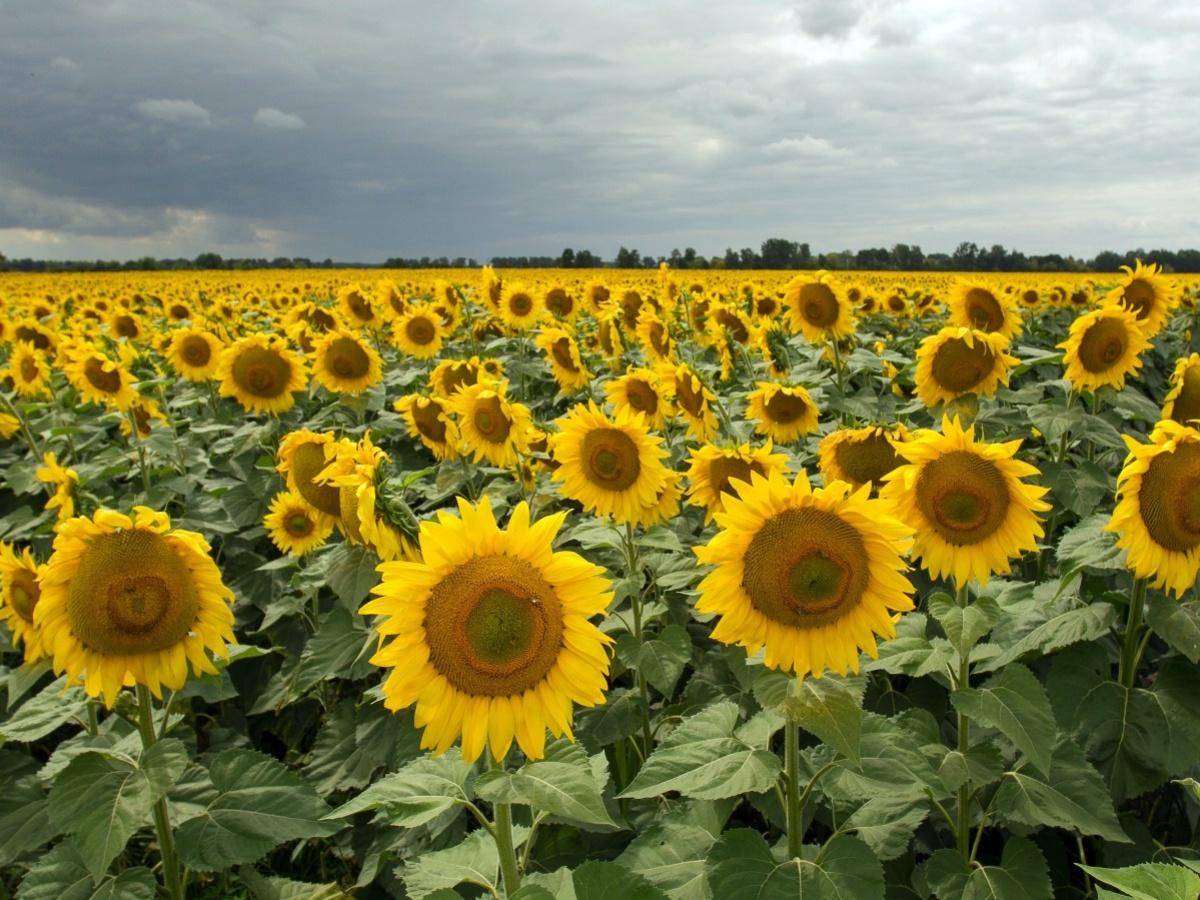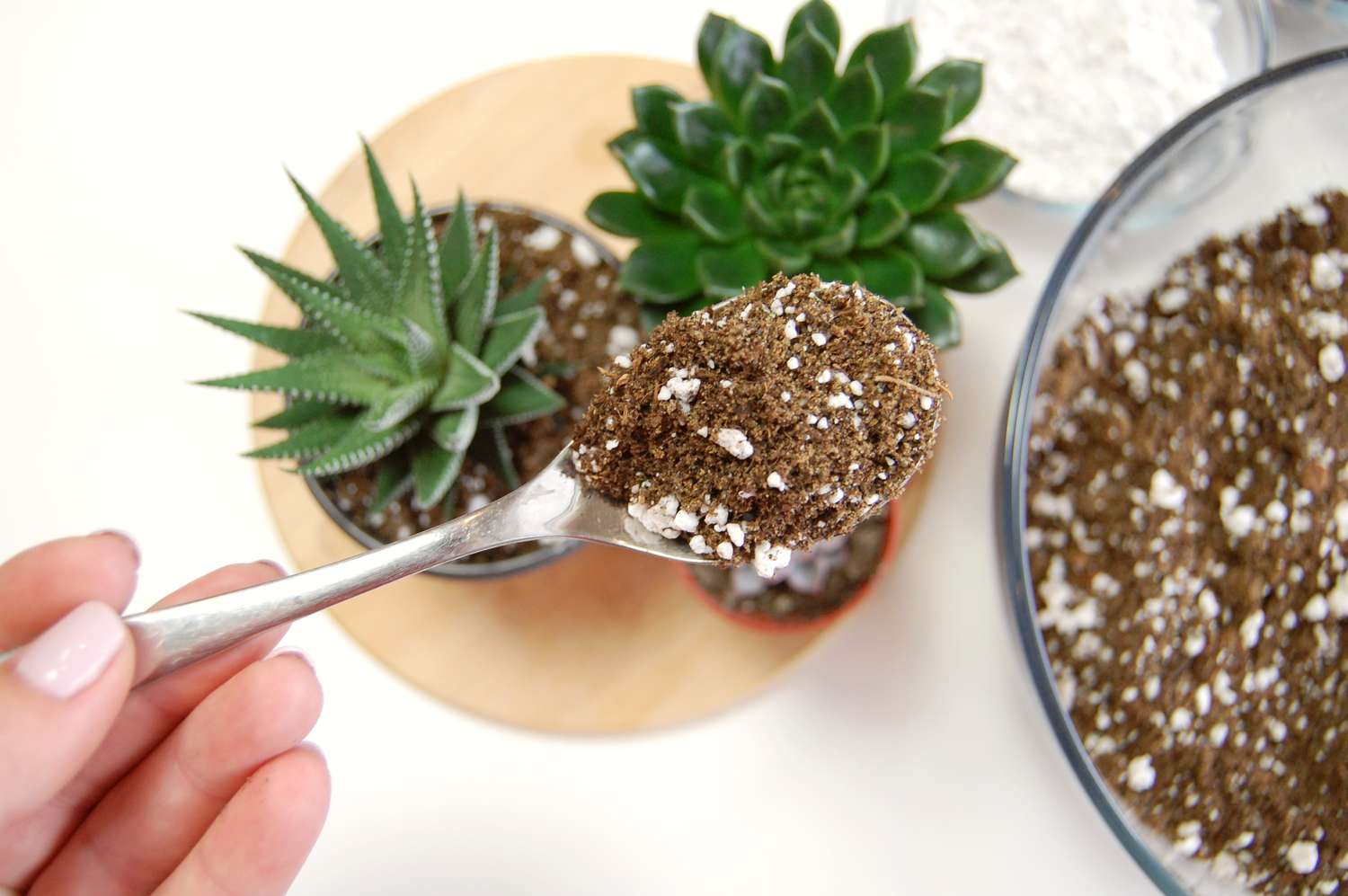Home>Gardening News and Trends>What Do You Need For A Greenhouse
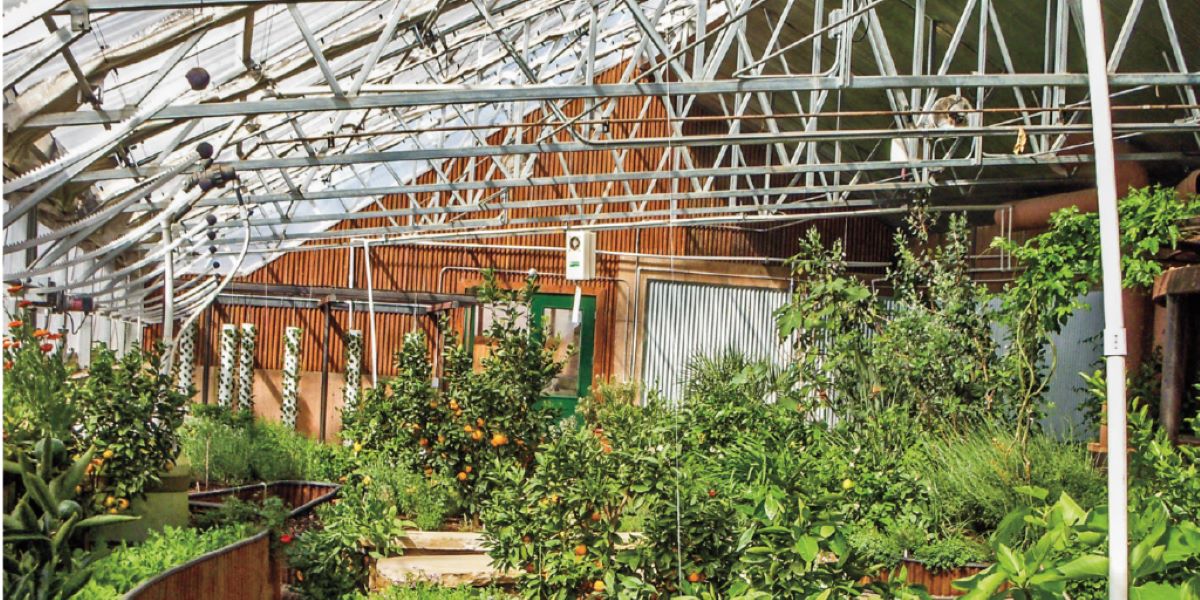

Gardening News and Trends
What Do You Need For A Greenhouse
Modified: January 22, 2024
Get the latest news and updates on what you need to set up a greenhouse. Discover tips, techniques, and essential tools for a successful greenhouse gardening experience.
(Many of the links in this article redirect to a specific reviewed product. Your purchase of these products through affiliate links helps to generate commission for Chicagolandgardening.com, at no extra cost. Learn more)
Table of Contents
Introduction
Welcome to the wonderful world of greenhouse gardening! Whether you’re a seasoned gardener looking to extend your growing season or a beginner with a green thumb, a greenhouse is a valuable and versatile tool for cultivating plants. It provides a controlled environment where you can nurture a wider variety of plants, regardless of the weather conditions outside.
A greenhouse is a structure designed to trap heat and light from the sun, creating a microclimate that is ideal for plant growth. By utilizing various technologies and techniques, you can modify the temperature, humidity, and light levels to mimic the optimal conditions for different types of plants.
Why invest in a greenhouse, you may ask? Well, the advantages are numerous. Not only does it allow you to grow plants that may otherwise struggle in your local climate, but it also offers protection from pests, diseases, and harsh weather conditions. Additionally, greenhouse gardening enables you to start seeds earlier, extend the growing season, and enjoy fresh produce year-round.
Whether you plan to use your greenhouse for growing flowers, vegetables, herbs, or a combination of plants, this comprehensive guide will provide you with the essential knowledge and strategies to set up and maintain a successful greenhouse. From choosing the right location and materials to implementing effective ventilation, heating, and watering systems, we’ve got you covered.
In the following sections, we will explore the key factors to consider when setting up a greenhouse, including its location and placement, structure and materials, ventilation and cooling systems, heating and insulation options, lighting, irrigation and watering systems, growing medium and containers, plant selection and care, as well as pest and disease management. By the end of this guide, you’ll have the tools and information you need to create a thriving oasis for your plants.
Purpose of a Greenhouse
A greenhouse serves several important purposes in gardening and plant cultivation. It offers a controlled environment that allows you to create optimal growing conditions, regardless of the outside weather or climate. Let’s delve into the key purposes of a greenhouse:
1. Extending the Growing Season: One of the main advantages of a greenhouse is that it extends the growing season, allowing you to start planting earlier in the spring and continue harvesting later into the fall or even year-round. By maintaining a stable temperature and protecting plants from frost, a greenhouse provides a safe haven for tender plants that wouldn’t survive outdoors.
2. Creating Ideal Growing Conditions: With a greenhouse, you have control over various environmental factors such as temperature, humidity, and light. This allows you to create the perfect conditions for different types of plants. You can adjust the temperature to suit the needs of tropical plants or create a cool environment for cold-weather crops. Similarly, you can modify the humidity levels to meet the requirements of specific plants.
3. Protecting Plants from Pests and Diseases: Greenhouses provide a physical barrier between your plants and the outside world. This means that they are shielded from common pests and diseases that can wreak havoc on your garden. By keeping insects, rodents, and other critters out, a greenhouse helps to maintain the health and vitality of your plants. Additionally, you can implement preventive measures such as screening vents and regularly inspecting plants to catch any potential pest or disease issues early on.
4. Experimenting with New and Rare Plants: A greenhouse offers the opportunity to grow a wider range of plants, including exotic and rare species that may not thrive in your local climate. It allows you to venture into less common varieties and explore your passion for unique flora. With proper care and attention, you can cultivate plants that may not be readily available in nurseries or garden centers.
5. Enhancing Plant Propagation: Greenhouses are ideal for propagating plants from seeds, cuttings, and divisions. The controlled environment provides the perfect conditions for germination and root development. The ability to propagate your plants enables you to expand your garden, create backups of your favorite specimens, or even generate extra income by selling plants.
6. Enjoying Year-Round Harvests: The ability to grow throughout the year means a constant supply of fresh, homegrown produce. By utilizing a greenhouse, you can enjoy a steady harvest of fruits, vegetables, and herbs, even during the winter months. This not only adds to the variety of your meals but also offers the satisfaction of self-sufficiency and sustainability.
A greenhouse is a versatile tool that provides countless benefits for gardeners. From extending the growing season to creating ideal growing conditions and protecting plants, it opens up a world of possibilities for successful and rewarding cultivation. So, whether you’re a dedicated hobbyist or a commercial grower, a greenhouse is a valuable asset to have in your gardening arsenal.
Location and Placement
Choosing the right location and placement for your greenhouse is crucial for its success. The location determines the amount of sunlight, wind exposure, and accessibility, while the placement ensures optimal conditions for plant growth. Consider the following factors when deciding on the location and placement of your greenhouse:
1. Sunlight: The greenhouse should receive ample sunlight throughout the day, especially in the morning and early afternoon. Choose a spot that is not shaded by trees, buildings, or other structures. Maximizing sunlight exposure is essential for photosynthesis and plant growth.
2. Orientation: Orient the greenhouse with the longest side facing south in the northern hemisphere and north in the southern hemisphere. This allows for maximum exposure to the sun, especially during the winter months when the sun is lower in the sky.
3. Wind Exposure: Consider the prevailing wind direction in your area and position the greenhouse accordingly. Placing it near a windbreak, such as a fence or a row of shrubs, can help protect against strong winds that can damage or uproot plants.
4. Accessibility: Ensure easy access to the greenhouse from your house or other structures. This will make it convenient for you to tend to your plants and transport supplies. It’s also helpful to have a water source nearby for irrigation purposes.
5. Drainage: Choose a location with good natural drainage to prevent waterlogging and excessive moisture buildup. If the area tends to retain water, consider installing a drainage system or raising the greenhouse structure on a mound to facilitate proper drainage.
6. Existing Landscaping: Take into account any existing landscaping elements, such as trees, shrubs, or gardens, that may impact sunlight and airflow. Trim back trees or remove obstacles that may cast shadows on the greenhouse or obstruct its functionality.
7. Local Regulations: Check with your local authorities or homeowner’s association regarding any regulations or permits required for building a greenhouse. There may be restrictions on the size, height, or placement of the structure.
8. Future Expansion: Consider your future plans and potential expansion of the greenhouse. Leave enough space around the greenhouse to accommodate future additions or modifications, such as installing additional sections or structures.
Remember, the location and placement of your greenhouse significantly impact the overall performance and success of your plants. Take the time to carefully evaluate and choose the best spot for your greenhouse, considering factors like sunlight, wind exposure, accessibility, and drainage. By selecting an optimal location, you’ll provide your plants with the ideal environment to thrive and flourish.
Structure and Materials
The structure and materials of your greenhouse play a pivotal role in its durability, efficiency, and functionality. The right choice of structure and materials ensures the longevity of the greenhouse and provides a stable environment for your plants. Consider the following factors when selecting the structure and materials for your greenhouse:
1. Frame Structure: Greenhouse frames are typically made of wood, aluminum, or galvanized steel. Wood frames offer a natural and aesthetically pleasing option. Aluminum frames are lightweight, durable, and resistant to rust and corrosion. Galvanized steel frames are strong and provide excellent structural stability.
2. Covering Materials: The covering material of the greenhouse affects factors like light transmission, insulation, and durability. Polycarbonate panels are popular for their durability, light diffusion, and excellent insulation properties. Glass provides maximum light transmission and a more aesthetic appeal. Polyethylene film is an affordable and versatile option but may need replacement more frequently.
3. Glazing Options: Depending on your climate and the level of insulation required, you can choose different types of glazing. Single glazing with a transparent covering is suitable for mild climates. Double or triple glazing with air or insulating panels helps improve insulation and energy efficiency, making it more suitable for colder regions.
4. Structural Considerations: The shape and design of the greenhouse structure influence its stability and ability to withstand wind, snow, and other weather conditions. A sloped roof allows for better snow and water runoff, while a Gothic or Quonset style offers strength against wind loads. Consider factors like the average snowfall and wind speeds in your area when selecting the structure.
5. Foundation: A solid and level foundation is essential to provide stability and support for the greenhouse structure. Options include concrete, wood, or steel posts, depending on your preference and budget. Ensure that the foundation is properly anchored to prevent shifting or movement in strong winds.
6. Ventilation: Adequate ventilation is crucial for a healthy greenhouse environment. Opt for a structure that allows for the installation of vents, louvers, or fans to regulate temperature and humidity levels. Proper air circulation is essential to prevent the development of mold, diseases, and heat stress on plants.
7. Consider Future Expansion: If you plan to expand your greenhouse in the future, choose a structure that can easily accommodate additional sections or extensions. This allows you to scale up your gardening operations without the need for significant modifications or rebuilding.
When selecting the structure and materials for your greenhouse, it’s essential to balance factors like cost, durability, aesthetics, and functionality. Assess your specific needs, local climate conditions, and long-term goals to make an informed decision. By choosing the right structure and materials, you’ll create a sturdy and efficient greenhouse that provides a favorable environment for your plants to flourish.
Ventilation and Cooling Systems
Ventilation and cooling are essential aspects of maintaining a healthy and productive greenhouse environment. Proper airflow and temperature regulation help prevent the buildup of heat, humidity, and stagnant air, which can cause problems like plant stress, disease, and pest infestations. Consider the following ventilation and cooling systems for your greenhouse:
1. Natural Ventilation: Natural ventilation relies on openings such as vents, windows, and doors to allow for the movement of air. It takes advantage of prevailing winds and temperature differentials between the inside and outside of the greenhouse. Ventilation can be achieved through sidewall vents, roof vents, or ridge vents that can be opened and closed manually or automatically.
2. Exhaust Fans: Exhaust fans are essential for supplementing natural ventilation and expelling hot or stagnant air. They draw fresh air into the greenhouse and exhaust warm air outside. Properly positioned exhaust fans help maintain a consistent temperature and reduce humidity levels.
3. Circulation Fans: Circulation fans improve air movement within the greenhouse, reducing temperature stratification and preventing the formation of microclimates. These fans promote the circulation of fresh air, helping to distribute heat and moisture evenly throughout the greenhouse and preventing the buildup of hot spots or stagnant areas where pests and diseases can thrive.
4. Automated Control Systems: Automated control systems utilize sensors and thermostats to monitor temperature, humidity, and other environmental factors. These systems can automatically adjust ventilation, fan speed, and cooling mechanisms based on predetermined parameters, ensuring optimal growing conditions even when you’re not physically present.
5. Shade Cloth or Shade Paint: To prevent excessive sunlight and heat buildup during the peak of summer, consider using shade cloth or shade paint on the greenhouse roof. These materials help diffuse sunlight, reducing heat stress on plants and preventing them from getting scorched.
6. Evaporative Cooling: Evaporative cooling systems use the principle of water evaporation to reduce the temperature inside the greenhouse. This can be achieved through misting systems, fogging systems, or evaporative coolers. These systems provide localized cooling and help to maintain optimal humidity levels for plant growth.
7. Thermal Screens: Thermal screens or shade screens are installed inside the greenhouse to provide additional insulation during colder months and shade during hot periods. These screens help regulate temperature and reduce heat loss during the night.
By implementing effective ventilation and cooling systems in your greenhouse, you can maintain a comfortable and healthy environment for your plants. Adequate airflow and temperature control are crucial for preventing plant stress, optimizing growth, and minimizing the risk of diseases and pests. Choose the ventilation and cooling systems that best suit your greenhouse size, budget, and specific climate conditions for optimal results.
Heating and Insulation
Heating and insulation are vital components of a greenhouse, especially in colder climates or during the winter months. Maintaining adequate temperature levels and preventing heat loss are crucial for the health and growth of your plants. Consider the following heating and insulation methods for your greenhouse:
1. Heating Systems: There are various options for heating your greenhouse, depending on your budget, fuel availability, and the size of your structure. Common heating systems include gas or propane heaters, electric heaters, radiant floor heating, wood-burning stoves, or geothermal heating. Choose a heating system that provides consistent and adjustable heat to maintain the ideal temperature for your plants.
2. Insulation: Proper insulation helps retain heat and prevent temperature fluctuations in your greenhouse. Insulating materials like bubble wrap, polystyrene sheets, or double-layered polyethylene can be applied to the walls, roof, and even the floor of the greenhouse. Insulation minimizes heat loss during colder periods and retains warmth generated by the heating system.
3. Thermal Mass: Thermal mass refers to materials that have the ability to absorb, store, and release heat. Incorporating thermal mass elements, such as barrels of water or concrete slabs, into your greenhouse can help regulate temperature by absorbing excess heat during the day and releasing it slowly at night, maintaining a more stable and consistent environment for your plants.
4. Glazing and Covering Materials: Choosing the right glazing materials for your greenhouse can significantly impact its insulation properties. Double or triple-pane glass, polycarbonate panels, or insulating films with air pockets provide better insulation compared to single-pane glass or thin plastic coverings. These materials help reduce heat loss by trapping warm air inside the greenhouse.
5. Weatherstripping and Sealing: A properly sealed greenhouse prevents drafts and minimizes heat loss through small gaps and cracks. Weatherstripping can be applied to doors, windows, and vents to create a tight seal. Additionally, inspect the structure regularly for any areas requiring caulking or sealing to prevent heat escape.
6. Passive Solar Heating: Harnessing the power of the sun’s rays is another effective way to heat your greenhouse. Design features such as large south-facing windows or solar panels can capture solar energy, converting it into heat to warm the greenhouse naturally. Passive solar design maximizes sunlight absorption during the day and releases stored heat in the evenings.
By implementing heating and insulation measures in your greenhouse, you can create a stable and comfortable environment for your plants, even in colder climates or during the colder months. Maintaining proper temperature levels and preventing heat loss are essential for plant health and growth. Choose the heating and insulation methods that best suit your greenhouse size, budget, and specific climate conditions for optimal results.
Lighting
Lighting plays a critical role in the growth and development of plants. In a greenhouse, adequate and appropriate lighting ensures that your plants receive the necessary light energy for photosynthesis. While natural sunlight is ideal, supplementary lighting may be required in certain situations. Consider the following lighting options for your greenhouse:
1. Natural Sunlight: Utilizing natural sunlight is the most cost-effective and efficient way to provide light for your plants. Position your greenhouse in a location that receives maximum sunlight exposure throughout the day, especially during the winter months. Clear glazing materials such as glass or polycarbonate panels optimize light transmission into the greenhouse.
2. Artificial Lighting: In situations where natural sunlight is limited or insufficient, supplemental lighting can be used to provide the necessary light intensity and duration for optimal plant growth. LED (Light Emitting Diode) lights are a popular choice due to their energy efficiency, customizable spectrum, and long lifespan. Other options include fluorescent lights, High-Pressure Sodium (HPS) lights, or Metal Halide (MH) lights.
3. Light Intensity and Duration: Different plants have varying light requirements. Before selecting and installing artificial lighting, consider the light intensity and duration needed for the plants you are growing. Leafy greens and herbs typically require around 12-16 hours of light per day, while flowering plants may need up to 14-18 hours of light.
4. Lighting Placement: Proper lighting placement ensures that all plants receive adequate light coverage. Position the lights at an appropriate height and angle to evenly distribute light throughout the greenhouse. Adjustable hangers or racks can help modify the light’s distance from the plants as they grow.
5. Light Spectrum: Different light spectrums have varying effects on plant growth. Different stages of plant growth require different light spectrums. For example, blue light promotes vegetative growth, while red light stimulates flowering and fruiting. Some LED lights allow you to adjust the spectrum based on the specific plant’s needs.
6. Light Reflectivity: Maximizing light reflectivity within the greenhouse helps increase the overall lighting efficiency. Using reflective materials such as white paint or Mylar in the interior surfaces of the greenhouse can bounce light back onto the plants, enhancing light absorption and reducing energy waste.
7. Light Monitoring: Regularly monitor light levels within the greenhouse to ensure that your plants are receiving adequate light. Light meters or lux meters can help you measure the intensity of light, allowing you to make adjustments to the lighting setup as needed.
By providing the right lighting conditions, whether through natural sunlight or supplemental lighting, you can promote healthy plant growth and maximize productivity in your greenhouse. Understanding the lighting needs of your plants and implementing appropriate lighting strategies will help you create an optimal environment for successful cultivation.
Irrigation and Watering Systems
Irrigation and watering systems are crucial for maintaining proper hydration and moisture levels in your greenhouse. Providing an adequate and consistent water supply ensures that your plants thrive and flourish. Consider the following irrigation and watering systems for your greenhouse:
1. Drip Irrigation: Drip irrigation is a popular and efficient method of delivering water directly to the plant roots. It involves the use of drip emitters or micro-sprinklers that slowly release water near the plants’ base. Drip irrigation minimizes water wastage, reduces the risk of fungal diseases, and allows for precise control of water distribution.
2. Sprinkler Systems: Sprinkler systems are suitable for larger greenhouse setups. They distribute water through overhead sprinklers or misters, covering a larger area. However, it’s crucial to ensure proper sprinkler placement to prevent excessive water accumulation on foliage and potential disease issues.
3. Ebb and Flow System: An ebb and flow system, also known as a flood and drain system, involves periodically flooding the growing area with water and then draining it away. This system is particularly useful for plants grown in containers or on benches. It allows for efficient nutrient delivery and oxygenation of the roots.
4. Capillary Matting: Capillary matting is a passive watering system that utilizes absorbent mats placed beneath pots or trays. The mats draw water from a reservoir, and the plants absorb moisture through the bottom. Capillary matting helps maintain a consistent level of moisture and ensures plants have access to water when needed.
5. Automated Irrigation Controllers: Automated irrigation controllers help manage watering schedules, ensuring consistent and appropriate water supply for your plants. These controllers can be programmed to water at specific times and durations, taking into account factors such as plant type, growth stage, and environmental conditions. They can also be connected to sensors that measure soil moisture levels for more precise irrigation.
6. Hand Watering: Hand watering can be used for smaller-scale operations or precision watering. It involves manually using a watering can or hose to water plants individually. While labor-intensive, hand watering allows for flexibility and hands-on monitoring of plant needs.
7. Water Quality and Conservation: Use clean, filtered water to minimize the risk of contaminating plants with pathogens or chemicals. Collecting and storing rainwater or using water-efficient practices, such as mulching and using moisture-retentive growing mediums, can help conserve water and reduce water usage in the greenhouse.
Proper irrigation and watering systems are essential for maintaining plant health and optimizing growth in your greenhouse. Consider factors such as the size and type of plants, the watering requirements of different species, and the overall efficiency and sustainability of the system. By providing your plants with the right amount of water at the right time, you’ll create an optimal growing environment and set the stage for successful cultivation.
Growing Medium and Containers
The choice of growing medium and containers in your greenhouse significantly impacts the health and productivity of your plants. The right combination ensures proper root development, nutrient availability, and drainage. Consider the following factors when selecting the growing medium and containers for your greenhouse:
1. Growing Medium: Choose a growing medium that provides a balance of water retention and drainage, as well as nutrient-holding capacity. Options include soil-based mixes, soilless mixes (such as peat moss, vermiculite, and perlite), or a combination of the two. Consider the specific needs of your plants and their preferred pH levels when selecting a growing medium.
2. Container Types: Select containers that are suitable for the size and growth habits of your plants. Options include plastic pots, fabric bags, grow bags, nursery trays, or even recycled containers. Ensure that the containers have adequate drainage holes to prevent waterlogging and promote root health.
3. Size and Depth: The size and depth of the container should accommodate the full growth potential of the plant. A container that is too small can restrict root development, leading to stunted growth and limited nutrient uptake. Consider the mature size of the plant and choose a container that provides ample room for the roots to spread and grow.
4. Reusability: Consider the reusability of the containers for long-term sustainability. Opt for durable containers that can withstand multiple growing seasons and be easily cleaned and sterilized before reuse. This reduces waste and saves money in the long run.
5. Drainage: Adequate drainage is crucial to prevent waterlogging and root rot. Ensure that containers have sufficient drainage holes or use well-draining growing mediums to facilitate proper water movement. Elevating containers on pot feet or using trays underneath can also help prevent water from pooling.
6. Disease Prevention: Cleanliness is important in preventing the spread of diseases among plants. Ensure that containers are cleaned and sterilized between uses to minimize the risk of pathogens. Also, avoid using soil from outdoor gardens, as it may harbor pests, diseases, or weed seeds.
7. Organic Options: If you prefer organic gardening, choose containers and growing mediums that are free from synthetic chemicals or additives. Look for organic-certified products that align with your environmental and health-conscious goals.
When selecting the growing medium and containers for your greenhouse, consider the unique needs of your plants and the environment they will be growing in. By providing the right growing conditions through an appropriate medium and suitable containers, you’ll create a nurturing environment that supports healthy root development and optimal plant growth.
Plant Selection and Care
The selection of plants for your greenhouse is a crucial factor in determining the success and productivity of your gardening endeavors. Consider the following factors when choosing plants and providing proper care in your greenhouse:
1. Climate and Growing Conditions: Select plants that are well-suited to the specific climate and growing conditions of your greenhouse. Consider factors such as temperature, humidity, light levels, and available space. Choose plants that have similar requirements to create a harmonious and thriving ecosystem.
2. Crop Rotation: Practice crop rotation by changing the plant varieties or families cultivated in specific areas of your greenhouse from season to season. This reduces the risk of pests and diseases building up in the soil and promotes overall plant health. Rotate plants with different nutrient needs to optimize soil fertility.
3. Companion Planting: Planting compatible species together can provide mutual benefits, such as pest control, improved pollination, or enhanced nutrient uptake. Use companion planting techniques to create a more diverse and balanced ecosystem within your greenhouse.
4. Watering and Feeding: Provide adequate water and nutrients to your plants based on their specific needs. Monitor soil moisture levels and adjust watering accordingly. Regularly feed plants with balanced fertilizers or organic amendments to ensure they receive the necessary nutrients for healthy growth.
5. Pruning and Training: Prune plants regularly to remove dead or diseased foliage, improve airflow, and maintain desired shapes or sizes. Train vining or tall plants to grow on trellises, stakes, or cages to optimize space and provide support for heavy fruiting or flowering branches.
6. Pest and Disease Management: Monitor your plants regularly for signs of pests or diseases. Implement preventive measures, such as proper sanitation, routine inspections, and the use of organic pest control methods when needed. A well-maintained and clean greenhouse environment minimizes the risk of infestations.
7. Harvesting and Succession Planting: Harvest crops at their peak ripeness to enjoy the best flavor and yield. Succession planting involves sowing or transplanting new crops as others are harvested, ensuring a continuous supply of fresh produce. Proper timing and planning are crucial for a consistent harvest throughout the year.
8. Observing and Learning: Observe your plants closely, paying attention to their growth patterns, leaf color, and overall health. This allows you to identify any issues or deficiencies early on and make necessary adjustments. Constantly expand your knowledge by researching and learning about the specific care requirements of the plants you are growing.
By carefully selecting plants that thrive in your greenhouse’s conditions and providing proper care, you’ll create an environment that promotes healthy growth and high yields. Stay attentive to your plants’ needs, implement sustainable practices, and adapt your care routines as necessary. With proper plant selection and care, your greenhouse will become a flourishing haven for your gardening aspirations.
Pest and Disease Management
Maintaining a healthy and pest-free greenhouse environment is essential for the success of your plants. Preventing and managing pests and diseases is a crucial aspect of greenhouse gardening. Consider the following strategies for effective pest and disease management:
1. Identify and Monitor: Regularly inspect your plants for any signs of pests or diseases. Look for visible damage, abnormal growth, discoloration, or the presence of insects. Act promptly at the first sign of trouble to prevent the problem from spreading.
2. Cultural Practices: Promote plant health through good cultural practices. This includes providing proper nutrition, optimal watering practices, maintaining cleanliness, and avoiding over-crowding of plants. Healthy plants are less susceptible to pest and disease issues.
3. Integrated Pest Management (IPM): Utilize integrated pest management techniques to control pests effectively while minimizing the use of pesticides. This approach combines various strategies such as physical barriers, biological controls (like beneficial insects), cultural practices, and selective use of pesticides when necessary.
4. Sanitation: Keep your greenhouse clean and free from debris that may harbor pests or diseases. Remove dead leaves, fallen fruit, and plant debris regularly. Clean tools, pots, and other equipment to prevent the spread of pathogens.
5. Organic Pest Control: Consider using organic pest control methods to minimize the use of pesticides and reduce harm to beneficial insects. Examples include handpicking pests, spraying insecticidal soap, using neem oil, or employing natural predators like ladybugs or nematodes.
6. Quarantine New Plants: When introducing new plants to your greenhouse, isolate them in a quarantine area for a period of time to ensure they are pest and disease-free. This prevents the spread of potential issues to existing plants.
7. Crop Rotation and Companion Planting: Practice crop rotation and companion planting as part of your pest management strategy. Rotating crops helps disrupt pest life cycles and reduces the buildup of pests and diseases in the soil. Companion planting can help repel pests or attract beneficial insects that prey on pests.
8. Regular Monitoring: Continuously monitor your plants for any signs of infestation or disease. Act quickly if you notice any unusual symptoms, applying appropriate management measures to prevent further spread.
By implementing proactive measures, practicing good cultural practices, and employing integrated pest management strategies, you can significantly reduce the risk of pests and diseases in your greenhouse. Regular monitoring, quick action, and a holistic approach to pest and disease management will help maintain a healthy and thriving environment for your plants.
Conclusion
Congratulations! You’ve now gained a comprehensive understanding of the essential elements in setting up and maintaining a successful greenhouse. By carefully considering factors such as location and placement, structure and materials, ventilation, heating, lighting, irrigation, plant selection, and pest management, you can create an optimal environment for your plants to flourish.
A greenhouse provides you with the ability to extend your growing season, protect your plants from harsh weather conditions, and cultivate a wider variety of plants. Whether you’re a gardening enthusiast, a commercial grower, or someone with a green thumb, a greenhouse opens up a world of possibilities for growing your own fresh produce, nurturing exotic species, or simply enjoying the therapeutic benefits of tending to plants.
Remember to choose a suitable location with sufficient sunlight exposure, ensure proper ventilation and cooling, and consider energy-efficient heating and insulation options for year-round growing. Adequate lighting and irrigation systems will provide ideal conditions for your plants to thrive, and proper pest and disease management will keep your greenhouse healthy and productive.
As you embark on your greenhouse gardening journey, continue to expand your knowledge and stay curious. Embrace the opportunity to experiment with different plants, techniques, and growing methods. Gardening is an ongoing learning process, and every season brings new insights and experiences.
Take the time to observe your plants, adjust your care routines, and adapt to the changing needs of your greenhouse. Connect with other gardening enthusiasts, join online communities, and seek advice from local experts to enhance your skills and exchange valuable knowledge.
Most importantly, enjoy the journey. Greenhouse gardening is a labor of love that rewards you with beautiful plants, bountiful harvests, and a connection to nature. Embrace the joy that comes with nurturing life and witnessing the magic of growth right within the sanctuary of your greenhouse.
So, whether you’re embarking on a small-scale hobby or a grand endeavor, put your green thumb to work, let your creativity shine, and create a thriving oasis where your plants can thrive and flourish. Happy greenhouse gardening!

